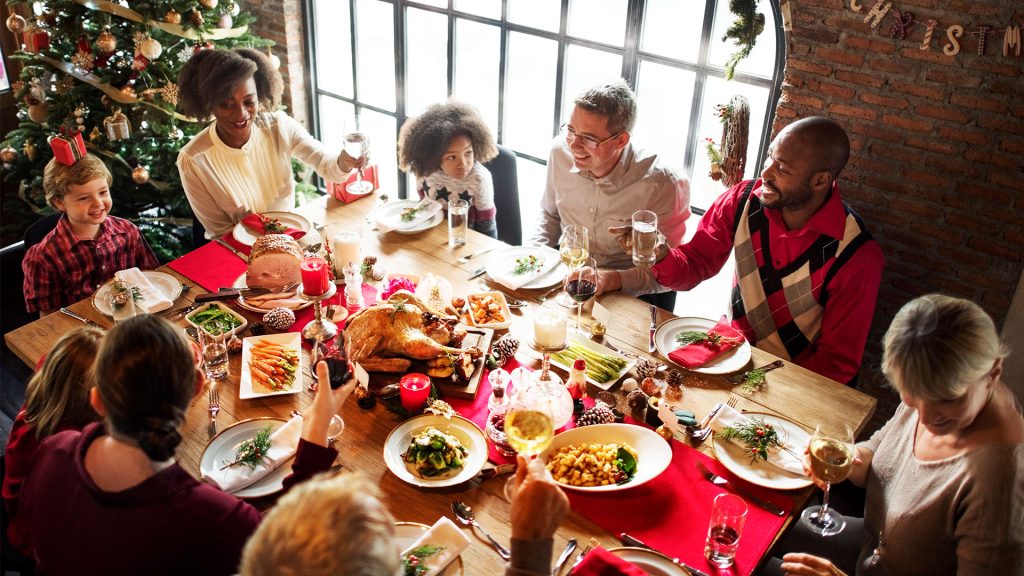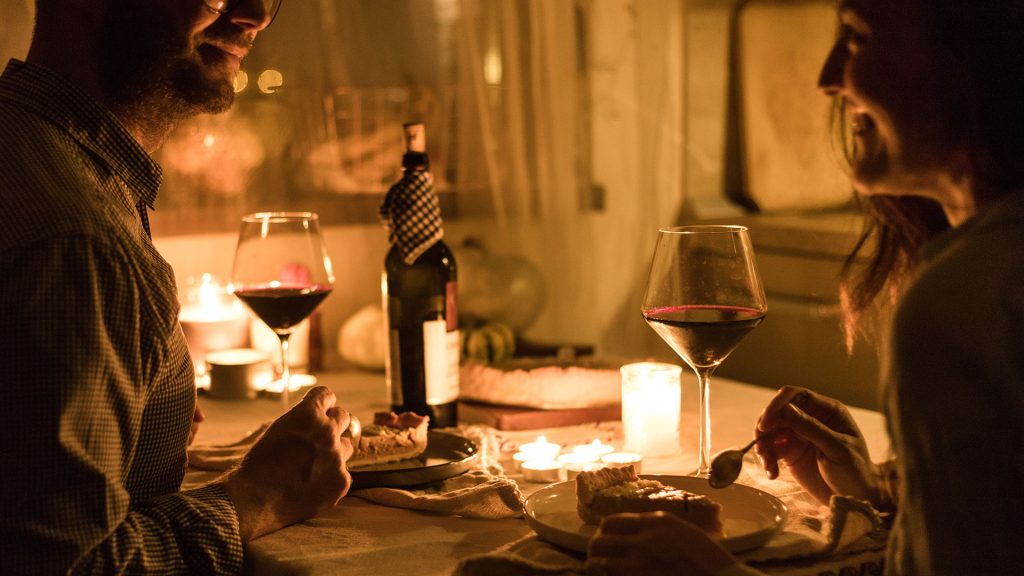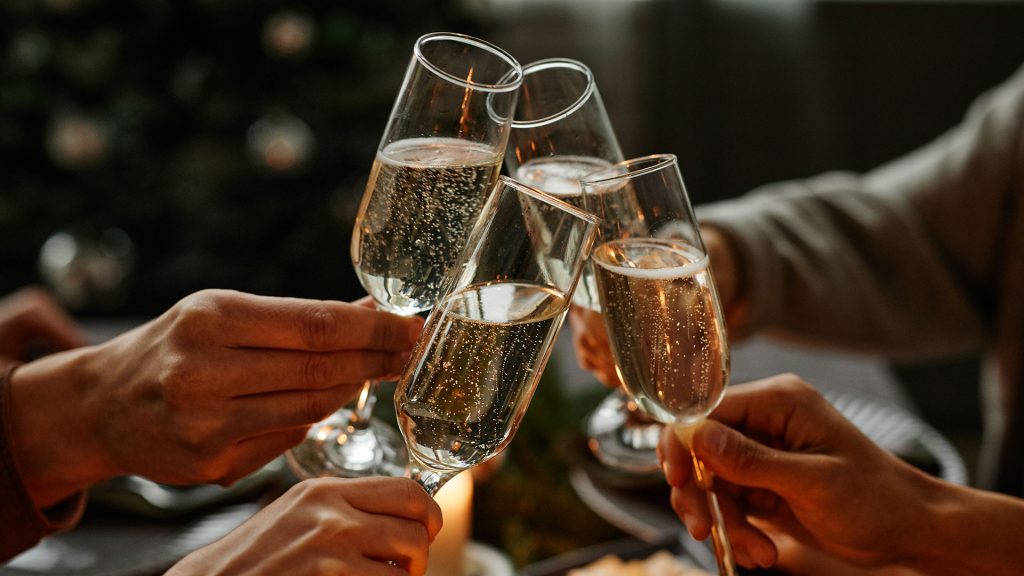’Tis The Season, as they say. And for us, The Season includes hosting festive gatherings with family, friends and great wine. Cool weather, hearty fare and a celebratory mood provide the backdrop for a myriad of opportunities to pop corks and fill glasses. Whether you’re hosting a casual holiday drop-in, a traditional sit down meal or a celebratory New Years party, we’ve got you covered. Here are some wine ideas to keep in mind for your merry month ahead…
Holiday drop-ins are a staple this time of year. But they provide a challenge when it comes to serving wine. With so many guests, with varying or unknown preferences, what wine should you serve? Our suggestion is to keep it simple: one white, one red and perhaps a sparkling. Versatility is paramount – you want options with broad appeal that will work with and without food. Finding reasonably-priced bottles that offer great value-for-money is a bonus! We suggest white wines with very little, if any, oak character. Oak is a polarizing wine component, particularly in whites. You also want to serve a white that’s fruit forward, meaning the primary characteristic is fruit, rather than savoury, spicy or mineral. Great options here include a French Sauvignon Blanc from the Loire Valley or an off-dry German Riesling from Mosel. The latter has the additional benefit of usually providing a lower alcohol option. For reds, avoid overly tannic, high alcohol wines like Barolo, Napa Cabernet or Bordeaux. Instead, opt for lighter, fruitier wines such as French Gamay from Beaujolais, New World Pinot Noir or Spanish Garnacha/French Grenache.

You’re hosting Christmas dinner! Always a daunting task. We can’t help you with the meal, but we can provide some insight into what wines to serve:
The classic turkey dinner with all the traditional trimmings can be a challenging meal to pair. It would be an easy proposition if it were just the bird itself, but the spate of rich, savoury side dishes and sauces, all with competing flavours and intensity levels, complicates things. The best white wine partners here are fruity and intense, with minimal or no oak and an underlying herbal/savoury character. Sauvignon Blanc, Riesling and lightly-oaked young Burgundy are great options. For reds, once again, avoid overly dry, structured wines. We favour young, fruity, round wines with low, gentle tannins. Ontario Pinot Noir, grenache blends from the Rhône and Zinfandel or Primitivo from California or Italy are perfect foils for this complex, comforting, delicious meal.
Classic prime rib dinner is a special treat and one often saved for Christmas. This is the time to dust off that bottle that you’ve been saving for a special occasion. The roast’s rich, fatty protein is ideally suited to full-bodied, structured red wines. Decant if possible, to bring out all the wine’s complexity and take some of the hard edges off its tannins. Our favourite choices here include aged Bordeaux from the Left Bank, Napa Valley Cabernet Sauvignon and Priorat from Spain. If there are white wine-only drinkers at the table, it’s best to serve up a textured, weighty, barrel-fermented Chardonnay from either France or Sonoma.

Did you know that more sweet wine is consumed during December than in the other 11 months of the year combined? Whether you’re looking to pair a wine with dessert, with after-dinner cheese or with a fire on a cold winter’s night, sweet wines offer up a deliciously complex experience that should not be overlooked. There are many types of sweet wines, from all over the world. Almost without exception, they offer incredible value and a unique array of aromas and flavours. Unfortunately, however, the sweet wine selection you’ll find in the Ontario market often lacks depth and interest. Here are our recommendations:
- If you can find one, we really love Vins Doux Naturels from southern France’s Roussillon region. These are fortified wines made from local grapes. Wines labeled “Maury” and “Banyuls” are usually the easiest to find. Serve lightly chilled alongside cheeses, fresh fruit, rich tarts and cakes.
- Far more readily available and well-known is Port from Portugal’s Douro Valley. There are several styles and classifications but for the festive season we suggest a “Tawny”. These offer up the archetype complexity and barrel aging that most expect from the category. Once again, serve lightly chilled on its own after a meal, or with chocolate desserts or strong, hard cheeses.
- One of the few sweet wines that regularly command a high price is the famed French Sauternes, most notable for its use of botrytis-affected grapes, otherwise known as ‘Noble Rot’. Noble Rot is a very particular form of fungus that infects the grapes late in the growing season, resulting in concentrated, raisined flavours alongside a subtle and distinctive nutty, honeyed note, all balanced impeccably by ample natural acidity. Usually found in half bottles due to their price, chill and serve alongside soft, stinky cheeses, foie gras and fruit tarts.

The obvious choice for wine on New Year’s Eve is sparkling. The category’s historical reliance on celebratory enjoyment make it a natural fit before and after the ball drops. And though we strongly encourage drinking bubbles on a more regular basis, the New Year is indeed a great time to pop the cork on great sparkling wine. We love Champagne as much as anyone, but in today’s inflationary world, especially right after the expense of the holidays, we prefer more reasonably-priced options.
- Cava is Spain’s answer to Champagne, made in the same Traditional Method. These are often very dry, complex and great with or without food. You can usually find great examples between $20 and $30.
- French Crémant is another terrific and cost-effective alternative to Champagne. Once again made in the Traditional Method, Crémant can be made in any non-Champagne wine region. The best and more widely available examples tend to come from the Loire Valley, Burgundy and Alsace. You should be able to find plenty of options between $20 and $30.
- One of Ontario’s strongest wine categories is sparkling wine. You’ll find plenty of examples made in both the Traditional and Charmat (think Prosecco) Method. The region’s cool climate and grape selection provides the perfect framework for world-class sparkling wine. Expect to pay anywhere between $25 and $50 for quality bottles.
Wishing you and yours a very happy, safe and delicious holiday season!

